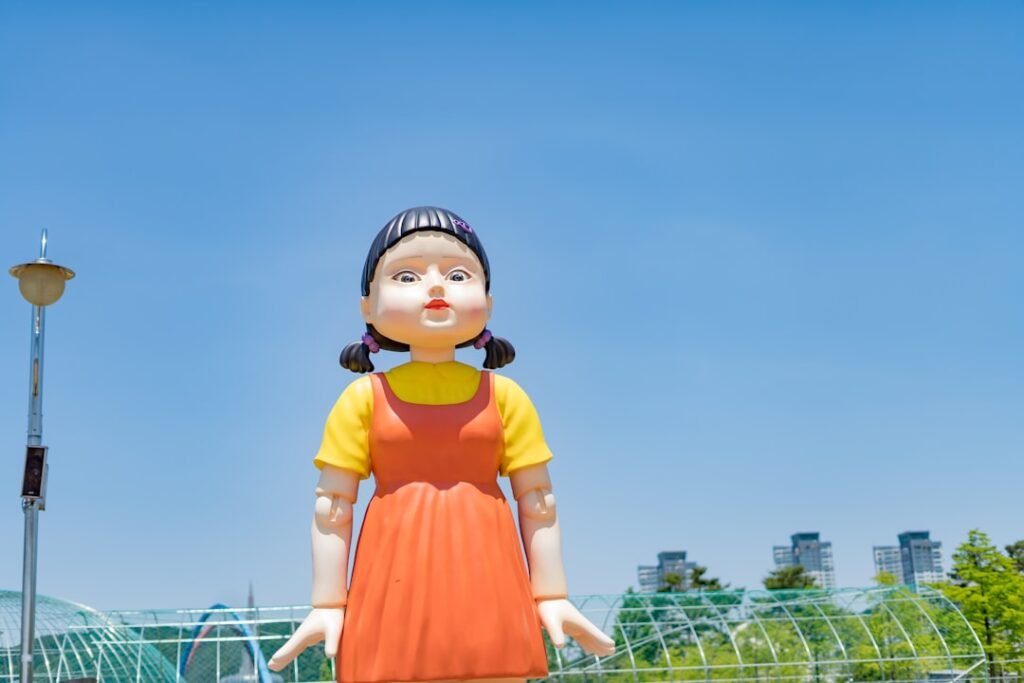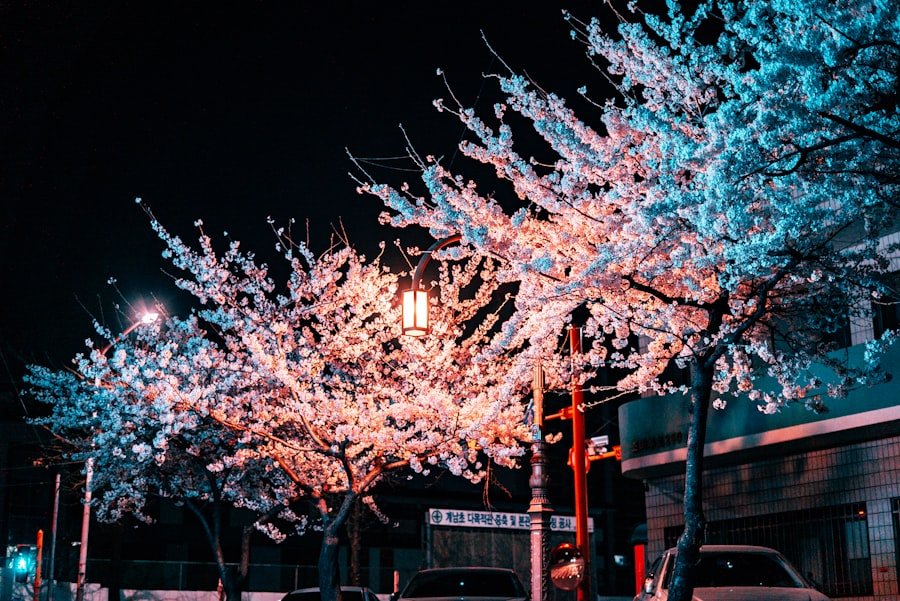

Korean Phrases for Shopping: From ‘Eolmayeyo?’ to ‘Igeo juseyo’
Shopping in Korea can be an exhilarating experience, filled with vibrant markets, trendy boutiques, and bustling shopping districts. However, navigating this lively environment can be daunting, especially if you are not familiar with the language. Understanding basic Korean shopping phrases can significantly enhance your experience, allowing you to communicate effectively with shopkeepers and fellow shoppers alike.
Whether you are hunting for the latest fashion trends in Myeongdong or exploring traditional markets like Gwangjang, having a grasp of essential phrases will not only help you make purchases but also immerse you in the rich culture of Korea. Korean shopping phrases encompass a variety of expressions that cater to different aspects of the shopping experience. From greetings to bargaining, these phrases will equip you with the necessary tools to engage in meaningful conversations while shopping.
As you delve into the world of Korean retail, you will discover that learning these phrases is not just about language; it is about connecting with people and understanding their customs. This article aims to provide you with a comprehensive guide to essential Korean shopping phrases, ensuring that your next shopping adventure in Korea is both enjoyable and rewarding. Learn Korean in Oslo! NLS Norwegian Language School is now offering classes. Register today.
Table of Contents
ToggleSummary
- Korean shopping phrases are essential for navigating markets and malls in South Korea.
- Basic greetings and polite expressions are important for building rapport with shopkeepers and staff.
- Asking for the price and bargaining is a common practice in Korean markets, so it’s important to learn how to do so politely.
- Requesting for assistance and recommendations can help you find the best items and deals.
- Expressing preferences and making choices will help you communicate what you’re looking for to the shopkeepers.
Basic greetings and polite expressions
When entering a shop in Korea, a warm greeting can set a positive tone for your shopping experience. The most common greeting is “안녕하세요” (annyeonghaseyo), which means “hello.” This simple yet effective phrase is a great way to initiate a conversation with shopkeepers and show respect for their service. Additionally, using polite expressions such as “감사합니다” (gamsahamnida), meaning “thank you,” can go a long way in establishing rapport.
Koreans value politeness and respect, so incorporating these basic greetings into your interactions will be appreciated. In addition to greetings, it is essential to understand how to express your needs politely. Phrases like “실례합니다” (sillyehamnida), which translates to “excuse me,” can be useful when trying to get someone’s attention or when you need assistance.
Using polite language not only reflects your respect for the culture but also enhances your overall shopping experience. By mastering these basic greetings and expressions, you will find that shopkeepers are often more willing to assist you, making your time spent shopping in Korea much more enjoyable.
Asking for the price and bargaining

One of the most crucial aspects of shopping is understanding prices. When you come across an item that catches your eye, knowing how to ask for its price is essential. The phrase “이거 얼마예요?” (igeo eolmayeyo?) translates to “How much is this?” and is a straightforward way to inquire about the cost of an item.
This phrase can be used in various contexts, whether you are in a high-end department store or a local market. Bargaining is also a common practice in many Korean markets, particularly in places like Dongdaemun or Namdaemun. While prices may be fixed in larger retail stores, smaller shops often allow for negotiation.
To engage in bargaining, you might say “조금 깎아 주세요” (jogeum kkakka juseyo), which means “Please lower the price a little.” It is important to approach bargaining with a friendly attitude and a smile, as this can create a more pleasant atmosphere for both you and the seller. Remember that bargaining is not just about getting the best deal; it is also about building a connection with the seller.
Requesting for assistance and recommendations
When shopping in Korea, you may find yourself needing assistance or recommendations from shopkeepers. Knowing how to ask for help can make your experience smoother and more enjoyable. A simple phrase like “도와주세요” (dowajuseyo), meaning “Please help me,” can be used when you require assistance finding a specific item or navigating the store.
Shopkeepers are generally eager to help, especially if you express your needs clearly. If you are unsure about what to buy or are looking for recommendations, you can ask “추천해 주실 수 있어요?” (chucheonhae jusil su isseoyo?), which translates to “Can you recommend something?” This phrase opens up a dialogue and allows the shopkeeper to share their expertise, guiding you towards popular items or hidden gems within their store. Engaging with shopkeepers in this manner not only enhances your shopping experience but also fosters connections that enrich your understanding of Korean culture.
Expressing preferences and making choices
As you explore various shops, expressing your preferences becomes vital in making informed choices. If you have a specific style or colour in mind, being able to articulate this will help shopkeepers assist you better. For instance, if you prefer something casual, you might say “저는 캐주얼한 스타일을 좋아해요” (jeoneun kaejueolhan seutail-eul joahaeyo), meaning “I like casual styles.” This phrase allows shopkeepers to present options that align with your taste.
When faced with multiple choices, it can be helpful to ask for opinions or comparisons. You could say “이것과 저것 중에 어떤 게 더 좋아요?” (igeotgwa jeogeot jung-e eotteon ge deo joayo?), which translates to “Which one is better, this one or that one?” This question encourages interaction and provides insight into what might be more suitable for your needs. By expressing your preferences clearly, you empower shopkeepers to assist you more effectively, leading to a more satisfying shopping experience.
Inquiring about the availability of items

Asking about the availability of items is another essential aspect of shopping in Korea. If you have your eye on a particular product but want to ensure it is in stock before making a trip, knowing how to inquire about availability is crucial. A useful phrase for this situation is “이거 있어요?” (igeo isseoyo?), which means “Do you have this?” This straightforward question can be used in various contexts, whether you’re looking for clothing, accessories, or electronics.
If you’re searching for something specific that may not be on display, you might ask “이런 거 있나요?” (ireon geo innayo?), translating to “Do you have something like this?” This phrase allows you to describe what you’re looking for without needing to know the exact terminology. Shopkeepers are often willing to assist and may even check their stockroom for items that are not readily available on the sales floor. By confidently asking about availability, you increase your chances of finding exactly what you need.
Asking for the size and colour of items
When shopping for clothing or accessories, knowing how to inquire about sizes and colours is essential. In Korea, sizes may differ from those in other countries, so it’s important to ask for clarification. You can use the phrase “이거 사이즈가 어떻게 되나요?” (igeo saijeuga eotteoke doenayo?), which means “What size is this?” This question helps ensure that you select the right fit before making a purchase.
In addition to size inquiries, asking about colour options can enhance your shopping experience. A simple phrase like “다른 색깔 있어요?” (dareun saekkkal isseoyo?), meaning “Do you have other colours?” allows you to explore various options available for an item. Shopkeepers are usually knowledgeable about their inventory and can guide you towards different colours or styles that may suit your preferences better.
By asking about sizes and colours confidently, you’ll be able to make informed decisions while shopping.
Making payment and requesting for a receipt
Once you’ve made your selections and are ready to make a purchase, knowing how to navigate the payment process is crucial. In Korea, cash and credit cards are widely accepted; however, it’s always good practice to confirm payment methods beforehand. When you’re ready to pay, simply saying “계산할게요” (gyesanhalkkeyo) means “I will pay now.” This phrase signals to the cashier that you’re ready to complete your transaction.
After making your payment, it’s customary to request a receipt for your purchase. You can do this by saying “영수증 주세요” (yeongsujeung juseyo), which translates to “Please give me a receipt.” Having a receipt is important for returns or exchanges later on, so don’t hesitate to ask for one if it’s not automatically provided. By mastering these payment-related phrases, you’ll navigate the checkout process with ease and confidence.
Expressing gratitude and saying goodbye
As your shopping experience comes to an end, expressing gratitude is an important cultural practice in Korea. A simple “감사합니다” (gamsahamnida) goes a long way in showing appreciation for the service you’ve received. Whether it’s at a small market stall or a large department store, acknowledging the assistance of shopkeepers fosters goodwill and leaves a positive impression.
When leaving a store, saying goodbye is equally important. You can use the phrase “안녕히 계세요” (annyeonghi gyeseyo) when departing from someone who remains at the store or “안녕히 가세요” (annyeonghi gaseyo) if they are leaving as well. These polite farewells reflect respect and kindness towards others and contribute positively to your overall shopping experience.
Common phrases for shopping in Korean markets and malls
Korean markets and malls offer unique shopping experiences filled with diverse products and vibrant atmospheres. Familiarising yourself with common phrases specific to these environments can enhance your interactions significantly. For instance, when exploring street markets, using phrases like “이거 맛있어요?” (igeo masisseoyo?), meaning “Is this delicious?” can help when sampling food items before purchasing.
In larger malls or department stores, phrases such as “어디서 찾을 수 있어요?” (eodiseo chajeul su isseoyo?), which translates to “Where can I find this?” are particularly useful when navigating through various sections of the store. Additionally, asking about promotions or discounts with “할인 있어요?” (halin isseoyo?) meaning “Is there a discount?” can lead to great deals on your purchases. By incorporating these common phrases into your shopping vocabulary, you’ll feel more confident exploring Korea’s retail landscape.
Practice exercises to improve your Korean shopping language skills
To truly master Korean shopping phrases, practice is key. One effective exercise involves role-playing scenarios where you simulate various shopping situations with a partner or language exchange buddy. For example, take turns being the shopper and shopkeeper while using different phrases from this guide.
This interactive approach not only reinforces vocabulary but also builds confidence in speaking. Another useful exercise is creating flashcards with essential phrases on one side and their meanings on the other. Regularly reviewing these flashcards will help solidify your memory of key expressions related to shopping.
Additionally, consider visiting local Korean markets or shops where you live; even if they are not in Korea, engaging with Korean-speaking individuals will provide real-world practice opportunities. In conclusion, mastering Korean shopping phrases opens up a world of possibilities during your retail adventures in Korea. From basic greetings to negotiating prices and expressing preferences, these phrases will empower you to navigate shops confidently while immersing yourself in the culture.
If you’re looking for structured learning opportunities in Korean language skills, consider enrolling in courses at the NLS Norwegian Language School in Oslo. Their comprehensive curriculum includes tailored lessons focusing on practical language use—perfect for enhancing your shopping experiences abroad!
If you want to learn Norwegian, you can register for classes here. We look forward to hearing from you and helping you become fluent in Norwegian.





